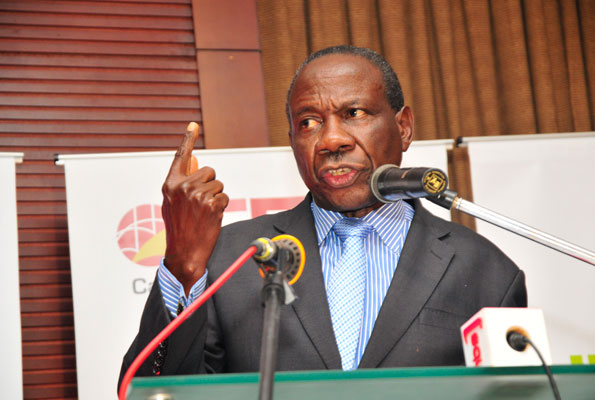Uganda has come up with strategies to boost investments in the country, according to the Accountability Sector Strategic Investment Plan 2017/18-2019/20, now in public domain.
Finance minister Matia Kasaija says the initiative comes at the right time when the country is putting a lot of emphasis on the mobilisation of financial resources domestically, to fund development projects.
“There are still concerns of lack of value for money in service delivery, inadequate mobilisation and slow economic growth which may curtail the realisation of NDPII and SDGs,” Minister Kasaija noted.
In the strategic plan, government plans to continue capitalising the Uganda Development Bank (UDB) in a bid to avail cheap loans to medium and long-term projects, and the bank was allocated shs50 billion in the 2017/18 Shs 29 trillion budget.
During the period, government also plans to fully operationalize Islamic Banking and review the current financial institutions regulatory and policy framework to enhance financial inclusion and develop capacity of micro and small enterprises to prepare bankable projects.
Further, government wants to leverage on securities to raise capital, both by the private and public sector but also reduce barriers to setting up and doing business in Uganda.
In the plan, it also wants to liberalise the pension sector by fast-tracking the Pension Liberalisation Bill, now gathering dust on the shelves of Parliament, having faced opposition from trade unions.
Government also intends to strengthen the Credit Reference Bureau (CRB) and develop a collateral registry to reduce defaulter rates but also integrate data systems for TIN, identity cards, utilities and Uganda Registration Services Bureau.
“In order to increase private investment, the sector shall review policies relevant to investment climate and implement policy recommendations arising from the Presidential Investor Round Table and Presidential Economic Council,” the document reads in part.
Further, government wants to facilitate linkage of foreign direct investments that require local partners through web portals, e-marketing.
Under the strategy government wants to make industry membership association mandatory as well as strengthen strategies to increase investor confidence and promote the public and private sectors to work together.
To increase insurance penetration in the country, government plans to develop and implement a national policy on insurance that will also see government insure its assets.
It also plans to fast track the implementation of the National Health Insurance Scheme, enforce workers compensation policy and engage the education system to appreciate and promote insurance of students.
“It will also develop and implement a sector sensitive financial literacy programme and sensitize the public on insurance; and increase government involvement and funding to the insurance sector,” the report states.
Government plans to boost the the pension sector whereby it will review the regulatory framework and transform the public service pension into a savings contributory scheme. This, government says, will boost long- term savings.
In order to increase the level of capitalisation and widen investment pportunities in the capital markets, planners want to revise and amend the legal and regulatory framework for capital markets to ease issuance of securities and encourage innovation and product development.
Government also plants to impose mandatory listing for companies in specific and strategic sectors ,which will require the listing of companies where government holds some shares. These would include Tier 1 Banks, telecommunication companies, insurance companies and energy companies.
It also wants to create access to government bond markets in the primary market and widen widen investor base by undertaking “aggressive investor education on the benefits of raising capital through capital markets.”
statistics show that over the last five years, economic growth averaged 4.5% and inflation was kept at single digit as 85% of the adult population had access financial services, as the average lending rate ranged from 22.1% to 25.2% while private-sector credit to GDP was estimated at 12% in 2015/16.
Over the same period, the total licensed investment ranged from US$1,125m to US$2,058 m.
Uganda continued to be at a low risk of debt distress with the present value of public debt-to-GDP ranging from 19.6% to 24.6%, which is within the “less than 50%” ceiling recommended by the Public Debt Management Framework.








